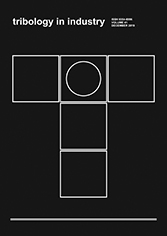Volume 42, No 1, 2020, Pages 41-49
Study on the Friction and Wear Characteristics of Bio-lubricant Synthesized from Second Generation Jatropha Methyl Ester
Authors:
M. Shahabuddin ![]()
![]() ,
M. Mofijur
,
M. Mofijur ![]() ,
M.A. Kalam
,
M.A. Kalam ![]() ,
,
H.H. Masjuki ![]()
DOI: 10.24874/ti.2020.42.01.04
Received: 22 July 2019
Revised: 28 October 2019
Accepted: 13 December 2019
Published: 15 March 2020
Abstract:
The demands for eco-friendly bio-lubricants are growing due to the environmental concern and the rapid depletion of petroleum oil. This paper outlines the tribological evaluation of jatropha methyl ester (JME) based bio-lubricant by analyzing its anti-wear (AW) and extreme pressure (EP) characteristics. The AW and EP tests were conducted using a four-ball tribotester with standard test methods of ASTM D 4172 and ASTM D 2783, respectively. After each test, the wear scar diameter, flash temperature parameter, viscosity and viscosity index (VI) were measured. The SEM analysis characterized the surface structure of the worn surface. The properties of formulated bio-lubricants were compared with the commercial lubricant SAE 15W-40. Experimental results showed that under boundary lubrication, the bio-lubricants showed excellent tribological properties up to the initial seizure load (ISL). Over the ISL, the friction and wear were increased slightly as compared to the commercial lubricant. The final seizure load (FSL) found for the bio-lubricant (BL 10), and commercial lubricant was 220 kg. The bio-lubricant with 10 % JME (BL 10) was found to be the most favorable, which met standard ISO requirements except for pour point.
Keywords:
Bio-lubricant, Jatropha Methyl Ester, Anti-wear, Extreme-pressure, Friction





